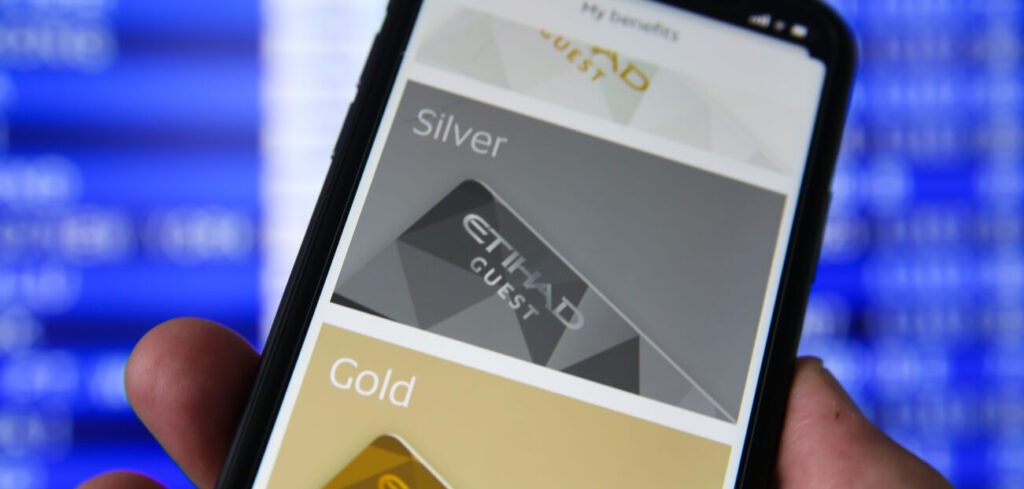According to the Global Carbon Project, the mass grounding of flights during 2020 caused CO2 emissions to reduce by up to 60%. It became clear that mass behavioral change is key to cutting carbon from flights. As a result, the general public was forced to start reviewing their travel habits. Global airlines are now revamping their rewards programs to encourage more sustainable choices.
Hotels and airline brands often come to mind when thinking about customer loyalty programs in this industry, but most airports have them too. An airport loyalty program is a great opportunity to encourage and influence passenger behavior. But with passengers spending minimum time at an airport, how can airport rewards actually deliver results?
How airlines are creating mass consumer behavior change
The main issue with loyalty programs in the travel industry is that they reward high-carbon travel. This also applies to fuel station loyalty programs, which reward customers for buying more petrol and therefore driving more miles.
The solution to these issues is to create loyalty programs that reward conscious actions. Etihad Airways unveiled its new sustainable guest loyalty program ‘Conscious Choices’ late last year. The scheme rewards travelers with “Tier Miles and additional benefits for carrying less baggage on board and offsetting everyday emissions”.
What airports can do to support behavior changes
Traditionally, airports have acted as operational establishments, rather than commercial businesses. As a result, loyalty programs by airlines, hotels and retailers are a lot further ahead. But there is a huge missed opportunity for airports that aren’t getting involved in rewards.
Airports can play a huge part in helping reach wider sustainability targets. For example, they could reward customers who recycle, or give passengers information about the carbon impact of their flight and suggestions on activities for them to offset this.
The key opportunity here comes in the form of customer data. Airports need to know what passengers are doing before and after flights to influence them as they move through an airport, and digital platforms can help build an insightful picture of customer activity. However, data collection methods in this space are very restricted.
Airports typically collect customer data when travelers log-in to access free wi-fi. From there, the airport can receive contact information. But simply collecting names and email addresses won’t allow airports to connect transactional or behavioral activity to a single customer profile.
The solution could lie in the creation of one common platform that hosts all the key stakeholders in the travel industry: airports, airlines, retailers and brands. Offering a single loyalty platform to passengers will also create a more harmonious customer experience, and all stakeholders get the benefit of abundant customer data.
A harmonious single-platform loyalty program can integrate methods such as card-linking so that any transactions made in an airport are linked to a single customer profile. Receipt scanning can also be used to collect data such as date and time of activity, geographical location, retailer information and full basket spend. The airport can then build a clearer picture of what passengers are buying, when they are buying it, and where they are buying it from. Stakeholders can then deliver targeted, tailored campaigns to segments of their customers, to improve the likelihood that a customer will make a transaction, perform a particular behavior, or choose to fly from a specific airport again.
Working together to create a single loyalty platform not only makes life easier for the customers but can also provide more data and revenue opportunities for airports, airlines and retailers. Loyalty programs give airports a way to better understand customers, increase their spending, drive retention and new customer acquisition, improve passenger experience and inform future strategies and investments.
Businesses must pivot to the priorities of the global community by putting sustainability at the forefront of their business
More can be done to encourage customers to make better choices. The question remains as to whether the post-pandemic travel economy will become more planet-friendly or bring us back to where we started. One thing is certain: airports, airlines, retailers and hotels have a huge opportunity to shift the way consumers behave through loyalty programs.
To do this successfully, the travel industry must work to understand new traveler profiles and segments today. Understanding how customers currently behave and creating personalized rewards that encourage them to choose specific actions can create a more sustainable industry.
It’s also imperative that airports understand the objectives of all stakeholders. Ultimately, more data-sharing will allow all parties to get a 360° view of their customer. Loyalty programs are mutually beneficial – they provide passengers with a straightforward, rewards-driven experience and they empower businesses to drive desired behaviors.
We are hoping that more businesses look to loyalty to understand their customers and drive initiatives, working together toward a future where businesses can profit while rewarding customers for doing what is right.


